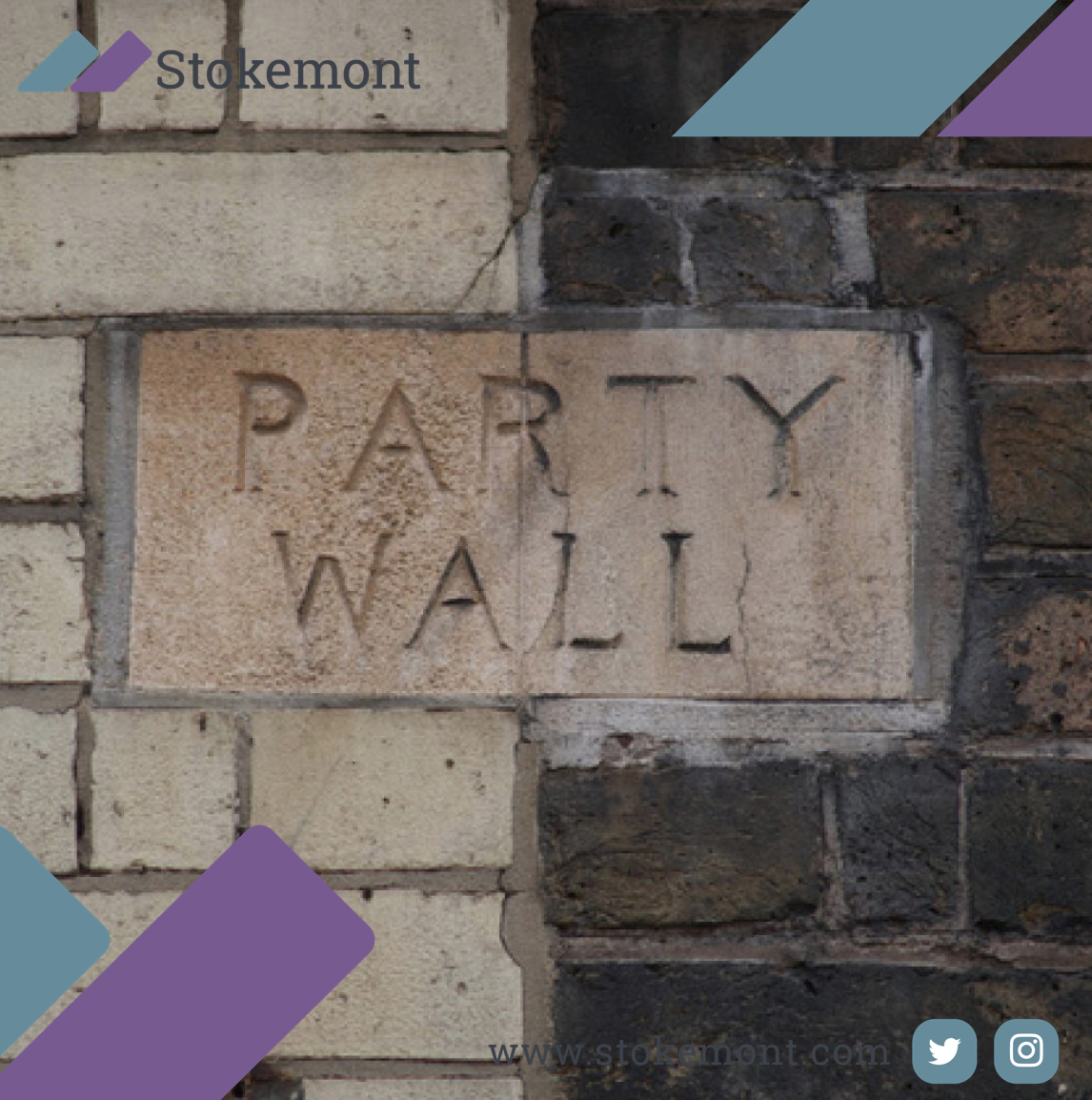Party wall surveying procedures are some of the most common typical surveying files that our party wall surveyors handle here at Stokemont.
In today’s property surveying blogpost, we are going to be looking at the specifics of party wall surveying procedures, and in particular the requirements around the service of Party Wall Notices by a building owner upon an adjoining owner.
Party Wall Notices are a legal requirement and have to be served a minimum of one month, or two months prior to the building owner’s planned works commencing.
The Party Wall Notice will need to be served to the adjoining owner. The adjoining owner is the legal referral for the property owner who borders or adjoins the building owner’s planned works.
The aim and intention of the Party Wall Notice is to notify the adjoining owner of the building owner’s planned works.
Once notified, the way the Party Wall etc Act 1996 views Party Wall Notices, is that an adjoining owner should then be able to make an informed Party Wall Notice response and decision on how they want to proceed, whether that is benefitting from the professional advice and input of a party wall surveyor, coming by way of Party Wall Notice Dissent or, alternatively, reserving the protections that the Party Wall etc Act affords them, by way of Party Wall Notice Consent.
However, in order for these all-important adjoining owner decisions to be made, the starting point is to ensure that the adjoining owner does indeed receive the building owner’s Party Wall Notice.
The Party Wall etc Act 1996 confirms that a building owner can serve the Party Wall Notice via post. Once the Party Wall Notice has been served, additional response days, commonly two calendar days, are applied to the Party Wall Notices statutory period.
In practice, this ensures that the adjoining owner is not left at a loss of response time, upon service of the Party Wall Notice, as effectively the Party Wall Notice still needs to find its way through the Royal Mail’s postal system, before it arrives safely with the adjoining owner at their property address.
In serving a Party Wall Notice, the building owner will post the Party Wall Notice to the address that is registered on the Land Registry Title Deed.
The Land Registry Title Deed is the legal service address that the adjoining owner would have had to enter into the Properties’ Register at the time of its purchase.
One of the most typical questions we find ourselves asked here at Stokemont is if a Party Wall Notice can get lost.
In our experience, Royal Mail losing post is actually a relatively rare occurrence.
However, in practice it is possible. However, we like to think that the Party Wall etc Act 1996 has an in-built protection against loss post.
While the first Party Wall Notice has a 14-day statutory Notice response period, the second Party Wall Notice, which follows on from the first, gives and adjoining owner a further 10 statutory Notice days to respond.
In effect, this means that the adjoining owner will receive two different types of Party Wall Notices through the post, both the initial one (commonly referred to as the first Party Wall Notice), and the second one (commonly referred to as the second Party Wall Notice or a 104 Party Wall Notice).
In practice, this means that the adjoining owner has ample opportunity to respond to the Party Wall Notice, and therefore even if one of the two Notices were to be lost in the post, they would still receive the second, thereby giving them full opportunity of the Party Wall etc Act 1996’s responses.
In the event that an adjoining owner does not respond to the Party Wall Notice, they are also likely to have a party wall surveyor appointed on their behalf in accordance with Section 10(4) of the Party Wall etc Act 1996, as follows:
If either party to the dispute— (a) refuses to appoint a surveyor under subsection (1)(b), or
(b) neglects to appoint a surveyor under subsection (1)(b) for a period of ten days beginning with the day on which the other party serves a request on him, the other party may make the appointment on his behalf.
In practice, this means that the building owner will be appointing a party wall surveyor on behalf of the non-responsive adjoining owner, with that surveyor then administering the Party Wall etc Act 1996 on behalf of the adjoining owner, as if they had been appointed by the adjoining owner in the first place.
The Act’s logic here is that when an owner does not respond to a Party Wall Notice, they are not left in the scenario whereby they are not afforded the legal right of protection.
If you would like to discuss party surveying procedures with our team of experienced and qualified party wall surveyors here at Stokemont, give us a call today and we would be more than happy to assist and advise you.




